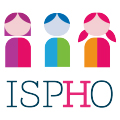Abstract
Background: Hemophilia A (HA) is an X-linked bleeding disorder diagnosed by a deficiency in factor VIII (FVIII). For severe HA (SHA), prophylaxis clotting factor concentrates (CFC) has become the standard of care; however, it imparts a high treatment burden and typically results in an annualized bleeding rate (ABR) of 2-6. Emicizumab, a subcutaneously administered FVIII substitute, has become the de facto standard-of-care prophylaxis for children with SHA in many countries. Previous clinical trials of emicizumab have assessed ABR in patients greater than 12 years without inhibitors, and in children less than 12 years with inhibitors; however, there is little information published regarding the ABR of emicizumab compared to CFC in non-inhibitor SHA children.
Methods: Using a retrospective electronic medical record chart review, we conducted a self-control analysis of 15 patients less than 12 years of age during equivalent periods of CFC versus emicizumab prophylaxis.
Results: The mean ABR on CFC and emicizumab was 1.79 and 1.13 (p = .092), respectively, with a substantially decreased rate of joint bleeds (CFC 0.94; emicizumab 0.33; p = .001) and spontaneous bleeds (CFC 0.79; emicizumab 0.23; p = .008). No safety events were recorded for patients while administering emicizumab. The mean annual cost of CFC prophylaxis was $515,340 (SD $199,540), compared to $328,410 (SD $137,230) for emicizumab prophylaxis (p < .001).
Conclusion: Emicizumab resulted in an improved ABR compared to CFC, especially for joint and spontaneous bleeds, had fewer administration complications, and was substantially less expensive compared to CFC prophylaxis; however, more research is necessary for a complete understanding of the effect of emicizumab on joint health and muscle bleeds.
Pediatr Blood Cancer . 2024 Dec;71(12):e31351. doi: 10.1002/pbc.31351. Epub 2024 Oct 4.
https://pubmed.ncbi.nlm.nih.gov/39367598/

